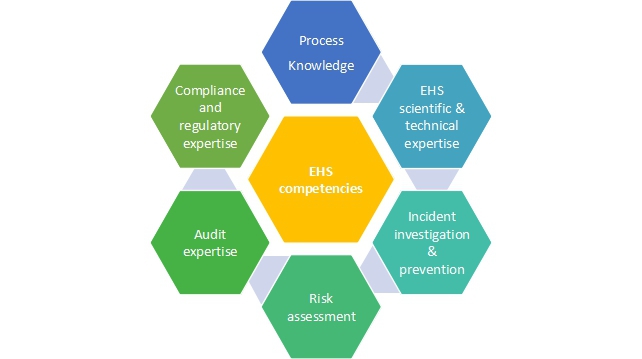
Table of Contents
Introduction
Competencies are seen as qualifiers for performing certain tasks in an organization. Their assessments mean measuring one’s skills, knowledge, traits, behavior, and attitude.
Before building something, we require a blueprint, raw idea, or some solid idea on which the development will be sustained. We also require competent people from the fields necessary to know what is needed, when, and where.
All the above and more are required for a successful venture and to overcome any challenges that may arise. And by challenges, we all know that they are unique. Every sector, business, and department comes with a unique set of challenges. These challenges not only require unique solutions but also competent people who know what problems may arise and how to deal with them.
One such essential department in every sector is the environmental, health, and Safety department, commonly known as the EHS department.
Now, the synergistic relationship between safety and an organization cannot be overlooked, and safety needs to be integrated into its fabric. EHS professionals build this relationship and, with best practices, ensure that everything falls in place.
To achieve EHS excellence, industries should aim to:
What is EHS Competency Mapping?

Competencies are seen as qualifiers for performing certain tasks in an organization. Their assessments mean measuring one’s skills, knowledge, traits, behavior, and attitude.
Competency mapping is performed comprehensively, where one determines the
Mapping the core competencies at every stage of career progression is essential.
In health and safety, a well-done EHS roles and responsibilities matrix links employees to job duties, job duties to hazards, and hazards to training to eliminate or mitigate those hazards. EHS roles and responsibilities, stitched within, strengthen an organization’s ability to address EHS risks and maintain the quality and quantity of EHS resources.
JSA and JHA act as aggregators of safety information and help safety professionals draw inferences. This functional competency mapping includes the work description, type of wearables to perform the work, potential hazards (if any), any regulatory obligations to be maintained, and other considerations.
HSE Competency Mapping Process
If created with this data, a health and safety competency matrix enables individuals to obtain the right training at the right time. The primary aim of competency mapping is to use well-defined competencies that align with the business priorities and are relevant to each person’s role level. Safety professionals use the database produced as a metric against which each individual is selected, developed, and fairly evaluated.
Now, utilizing a digital method to matrix competency mapping becomes a fair, transparent, and accessible process.
Competency Mapping Software
EHS Software modules act as pillars for a company’s sustainable future and make safety systems valuable and powerful. Here, checklists of all processes, methods, knowledge, skills, and experience are designed to achieve objectives. The data consolidated into the software can then systematically tackle the mapping process.
With modules such as
Safety professionals can make data-driven decisions, which is a more structured approach to the whole system. Similarly, if an industry maintains a digital version of occupational health, it is easy to access the physical and mental well-being of its employees.
If such software tools can interact with each other and gather relevant information, it becomes easy for EHS personnel to visualize the ehs matrix, organization’s existing situation and make decisions accordingly. When different departments coordinate jointly, software modules act as primary tools for recording, reporting, and analyzing.
When considered in-premise, software modules generate efficiency benefits for the competency mapping process, where key capabilities are logged and underlined. The potentially overwhelming conditions enable the safety experts to monitor, interpret the rich data and translate them into action.
Why is EHS Competency Mapping Important?
For a safety focused environment, it is crucial that the safety sttendants, managers and employees know exactly what they are required to do. In emergency situations, they play a crucial role to protect the business, employees, environment and of course, the brand reputation.
But apart from that, EHS competency mapping is crucial to;
Reduce Accidents
Competency mapping ensures that employees have the right training required to avoid or act during hazardous situations.
Improve Compliance
Competency mapping helps to identify knowledge gaps and fill them appropriately. EHS laws are strict, and the right people must be on board to ensure compliance and regulations.
Enhance Safety Culture
The people who know their job well are rightly involved in the activities. Thus, competency mapping ensures the right skillset for each job so that employees feel involved and take responsibility for a safe workplace.
EHS Competency Mapping: A Powerful Tool
Competency mapping is a win-win situation for all. It not only ensures that we have the right people on board, but it also helps enhance the safety culture, reduce accidents, ensure compliance, and make the employees feel involved. Additionally, with the correct tools and digital software, EHS competency mapping is the right plan put into action.
This is the age of continuous connection, and to stay ahead of the competition, connected strategies must be fundamental to the industry. The better the company understands its competencies, the more it holds the potential to customize the conditions in its favor.



